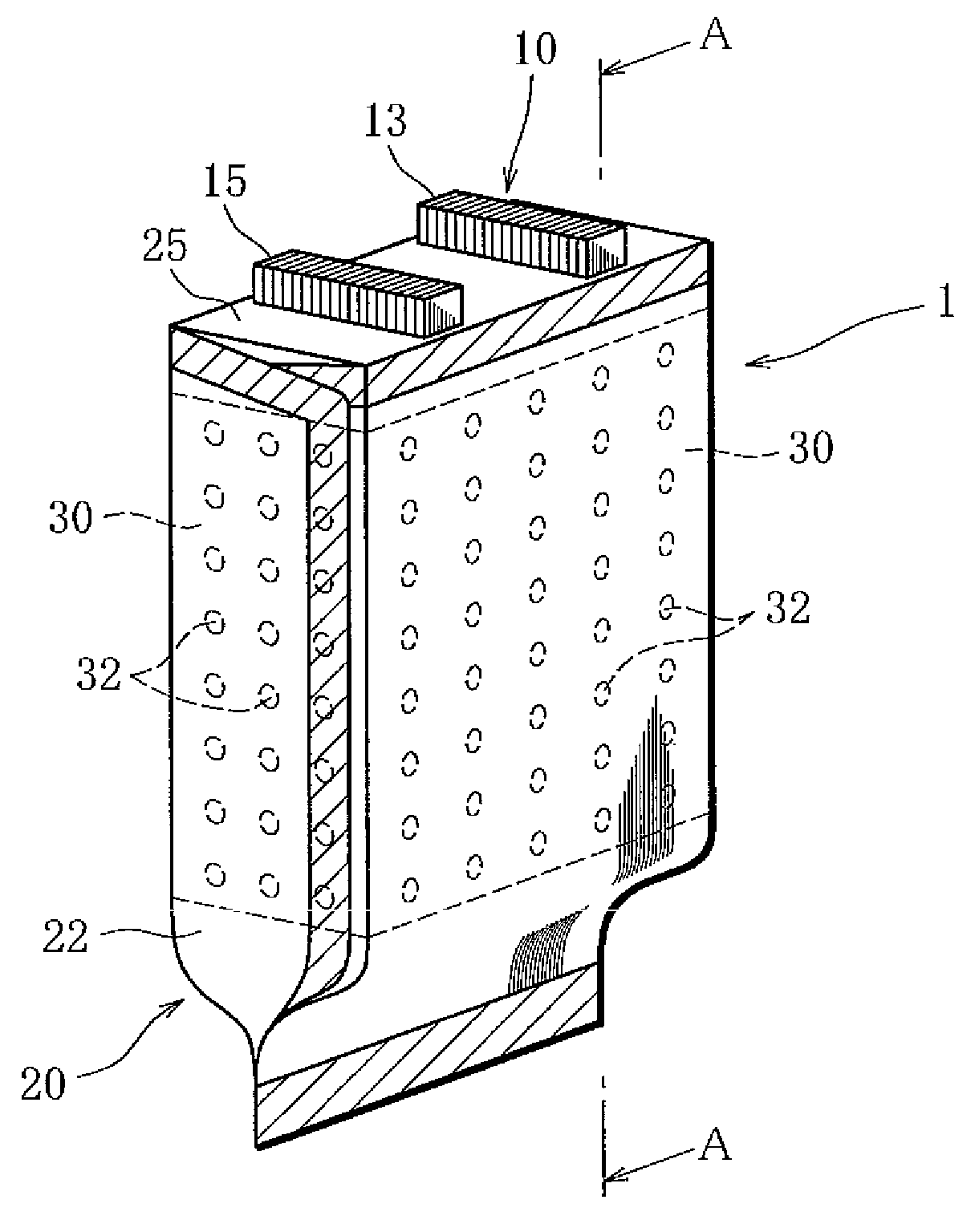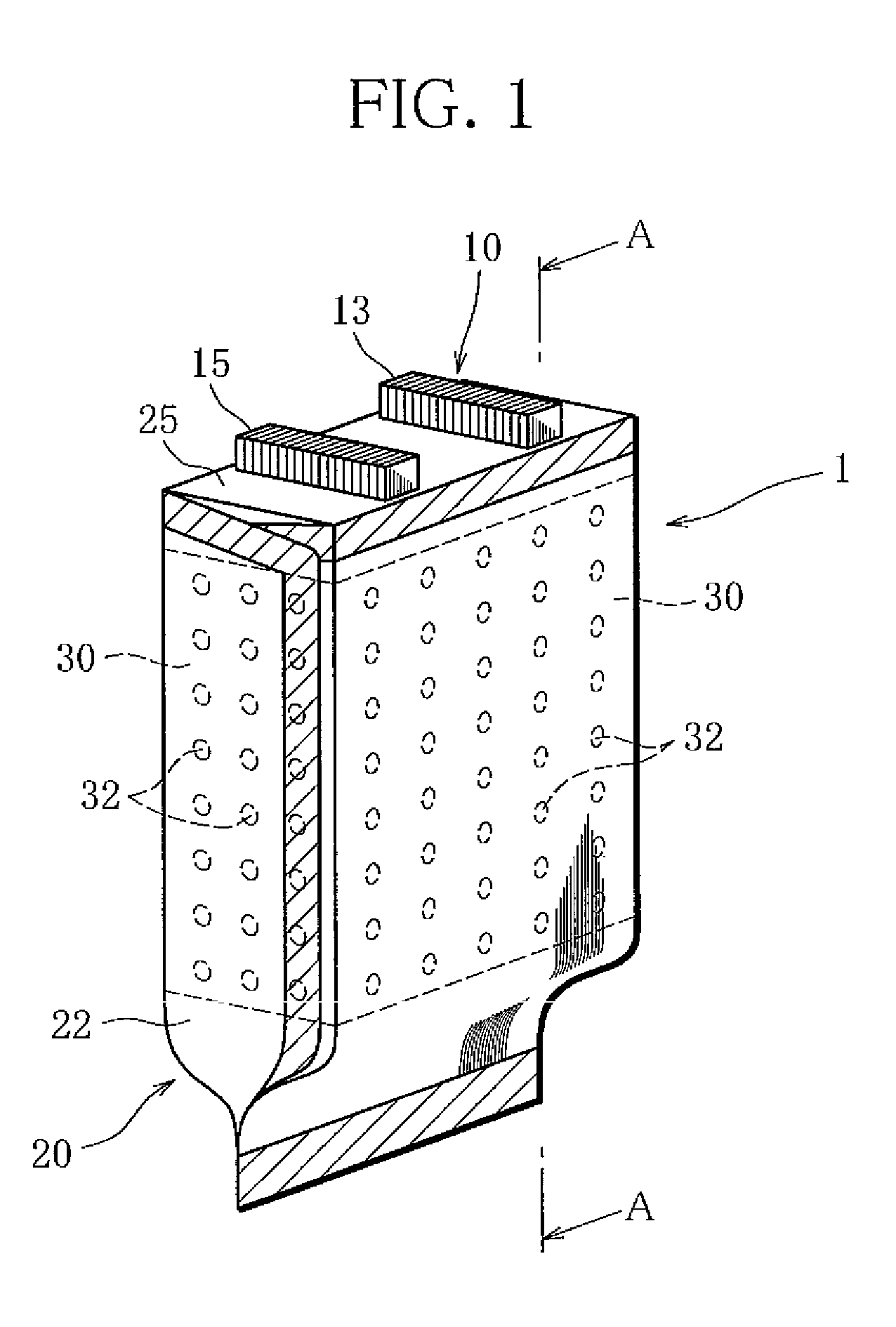Lithium ion rechargeable cell
a rechargeable cell and lithium ion technology, applied in the direction of cell components, sustainable manufacturing/processing, final product manufacturing, etc., can solve the problems of inability to make efficient extra space, limited containing capacity, and inability to change and achieve reliably improved power generation efficiency and undetectable change of the capacity of each of the pores
- Summary
- Abstract
- Description
- Claims
- Application Information
AI Technical Summary
Benefits of technology
Problems solved by technology
Method used
Image
Examples
Embodiment Construction
[0025]An embodiment of the invention will be described below with reference to the attached drawings.
[0026]FIG. 1 is a perspective view of a cell unit 1 of a lithium ion rechargeable cell according to the invention. FIG. 2 is an exploded perspective view of the cell unit 1. FIG. 3 partially shows a cross section, taken along line A-A of FIG. 1.
[0027]The cell unit 1 is one constituent unit of a lithium ion rechargeable cell that is modularized. A plurality of cell units 1 are packed in a module case, not shown, which is fabricated with a rigid case made of resin or metal, to be formed into a lithium ion rechargeable cell.
[0028]The cell unit 1 is basically formed by packing an electrode group 10, in which positive plates 12, negative plates 14, and separator plates 16 are superposed in layers, and an electrolyte into a cell case 20 made of a laminated film 22; depressurizing the electrode group 10 and the laminated film 22 so that the electrode group 10 and the laminated film 22 are f...
PUM
| Property | Measurement | Unit |
|---|---|---|
| thickness | aaaaa | aaaaa |
| thickness | aaaaa | aaaaa |
| thickness | aaaaa | aaaaa |
Abstract
Description
Claims
Application Information
 Login to View More
Login to View More - R&D
- Intellectual Property
- Life Sciences
- Materials
- Tech Scout
- Unparalleled Data Quality
- Higher Quality Content
- 60% Fewer Hallucinations
Browse by: Latest US Patents, China's latest patents, Technical Efficacy Thesaurus, Application Domain, Technology Topic, Popular Technical Reports.
© 2025 PatSnap. All rights reserved.Legal|Privacy policy|Modern Slavery Act Transparency Statement|Sitemap|About US| Contact US: help@patsnap.com



